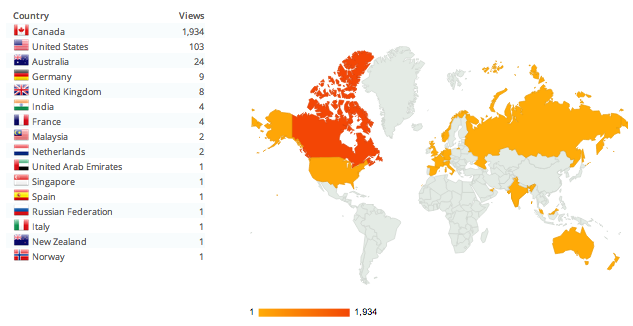
Try as we (or, most of us) might to convince ourselves that we’re only blogging “for ourselves,’ there is a certain pleasure derived from looking into the view-counts, clustermaps, and other user data that most of our blogs and sites are keeping track of for us. Knowing that there are specific people out there reading our words, watching our videos, and learning our songs always seems to push the envelop of what else we might put out there onto the web, and what reaction it might illicit.
But there is another layer to the data that shared sites are silently tracking and recording for us that offers another glance of our digital learning environments. Looking back at the first month of activity on the Philosophy 12 blog, I’m beginning to see a whole different purpose to these stats.
For instance, which posts are generating the most conversation?

Who are our most prolific commenters? (Interestingly enough, three of the top seven commenters this week are open participants, learning alongside us for no credit.)

Who are we reading?

Now, all of this could very well be nothing more than the ego stroke that goes along with realizing that rings in our imagination to the tune of Muhahaha! but data sets like the above (and these are just the ones that come with a free WordPress.com blog) can help sift through the firehose of web-generated course content and help facilitators and learners alike zero-in on not only those hotbeds of conversation, but perhaps also (to follow the metaphor through to its logical conclusion) those embers needing a little more oxygen to reach ignition.
I know that there are folks like George Siemens, and Philosophy 12 guru Mr. Downes, who are blazing trails in much larger learning environments than ours, nurturing the burgeoning field of Learning Analytics (or Educational Data Mining). But I wonder – as much of the Philosophy 12 experiment has made me in the last few weeks – about the applications these environments might lend K-12 education. I’m also curious:
- Are statistics like these informing/driving/related-whatsoever-to learning in your classroom(s)?
- How might the gathering of such information change classroom practices in the future?
- Is all of this just a big distraction from attending directly to student-learning?
- Bueller?